Giving new value to marine plastic waste: Art-oriented recycling produces fascinating materials
- #social good
- #Sustainability
sustainability
REMARE
Toba City, Mie
Giving new value to marine plastic waste
Art-oriented recycling produces fascinating materials

Toba City, Mie Prefecture, is located in a corner of Ise-Shima National Park, which is lined with beautiful ria coastlines, and is known as one of Japan's leading oyster farming areas. In 2021, REMARE was established near Toba Bay. REMARE's work is to recycle marine plastic waste into highly artistic materials. Although it is still a small company, its innovation and high level of work have earned it the 2023 Good concept design Award for "Development of a Marine Plastic Recycling Plant."
Why did Limare start this initiative and what vision does it have for the future? We spoke with Masasuke Mase, president of Limare, Takamasa Ishikawa, president of Ise-Shima Frozen, a local seafood company that has supported Limare since its founding, and Yoshihisa Goto, head of the Social Good Strategy Department NOMURA Co.,Ltd., who has been focusing on Limare's products and exploring how they can be used.
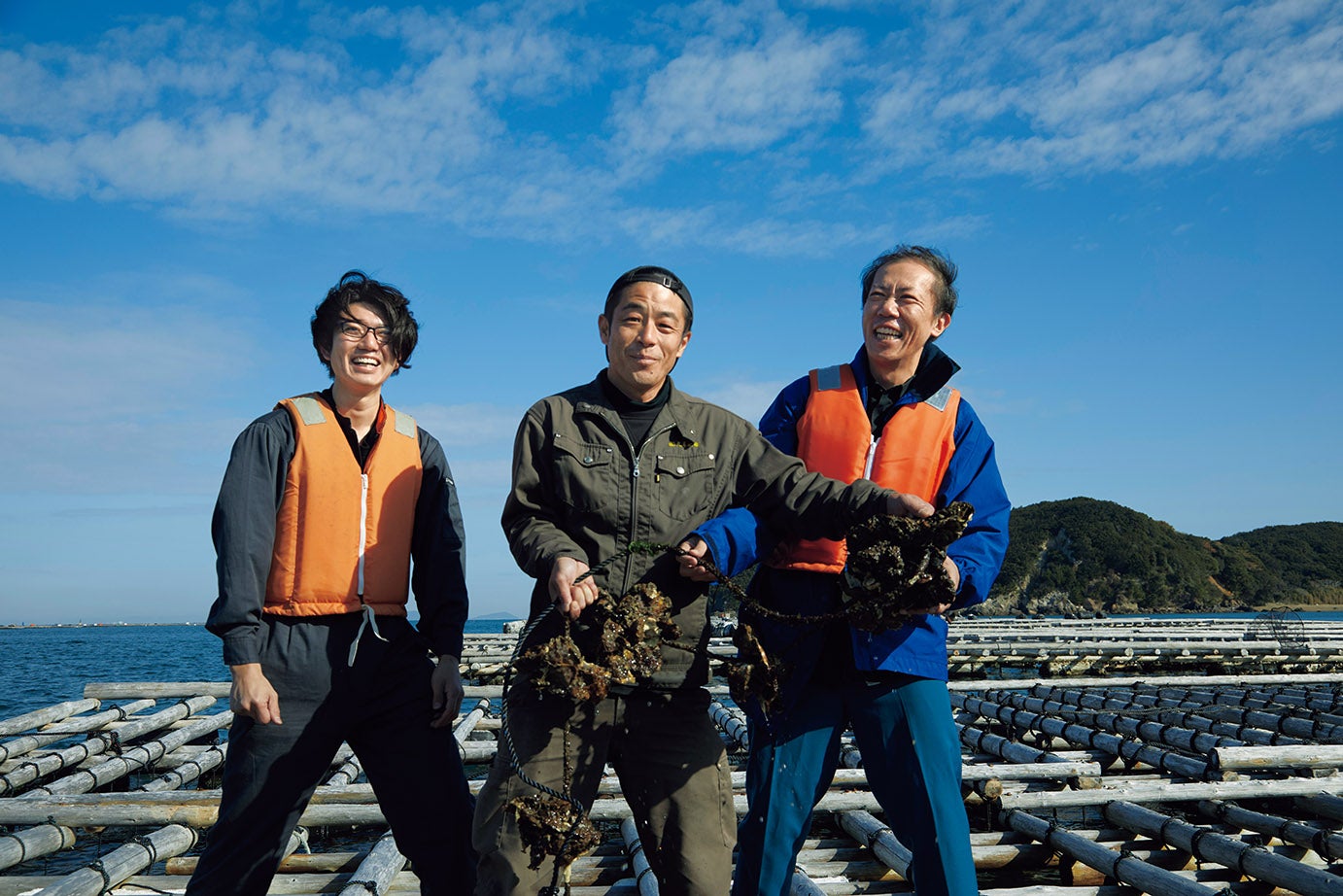
I started this job because I was a sailor.
Mase: I was originally qualified as a navigator and engineer, and served on a biological research vessel that went to the Antarctic Ocean. As we passed off the coast of the Philippines, we saw a strip of marine litter stretching as far as the eye could see, stretching toward Ogasawara and Hawaii. So, rather than researching the living things, I wanted to do something about that.
We knew that recycling marine plastic waste would not be profitable unless we built a factory on the beach and produced it locally, and we also needed the cooperation of local fishermen. But we couldn't get the locals to understand. We looked for a potential site and were turned down on Ishigaki Island, then we went south along the Kii Peninsula in Wakayama Prefecture, went around Kushimoto and went north to Toba, and suddenly they were willing to talk to us (laughs).
Ishikawa: That's because Toba is a town of aquaculture. In fisheries where fishermen go out to catch fish, they are rivals and have a somewhat closed-off temperament. However, aquaculture fishermen have long been concerned about the problem of red tides, and are very conscious of the marine environment. Aquaculture also uses a lot of plastic fishing gear.
I myself am a former salaryman who returned to Japan, but when I entered this world, I found a mountain of problems, such as the aging of fishermen, a lack of successors, and low fish prices. I want to do something about marine litter, but no one has the resources. Discarded fishing gear is piled up in the open. Then, a young man appeared who said, "Marine litter is a resource," and I immediately decided to support him.

After just a 30-minute conversation with Mase Ishikawa, he lent us a vacant seafood processing plant as a location for our recycling plant. What's more, rent and utility bills were all free for the first year. He also connected us with a network of people involved in the fishing industry, government officials, and university researchers, which helped us get started.
Even so, it was extremely difficult to actually get the business off the ground. When I was on a ship, I would pick up plastic waste in the ocean and do various experiments. So the processing technology itself wasn't that difficult. But even if I could change the shape, it wasn't profitable. I struggled for about a year, and then I met Goto from NOMURA Co.,Ltd.
Goto: At the time, I was in charge of events such as pop-ups for foreign brands, but all events that would bring people together were canceled due to the COVID-19 pandemic. That was the trigger for me to start working on "sustainable spaces." I was watching various environmental webinars to learn more. Limare was there, and the products they showed me on screen were beautiful.
Mase: What I showed them at that time was a 30cm square board, but although I made a lot of them, I had no way of selling them. It was a typical example of product-out, and since it was concept design /art item, I had no idea how to find people who wanted it.
Goto: Later, when I met Mase-san in person and talked to him, I learned about the background of his founding, how it contributes not only to the environment but also to the local community, and how many different people are working together to make it happen. So I became a fan. Then, as I talked about it within the company, we started to see some cases where people were using it, and gradually awareness of it started to increase.
It's a "lab" where we try anything with our handmade machines.
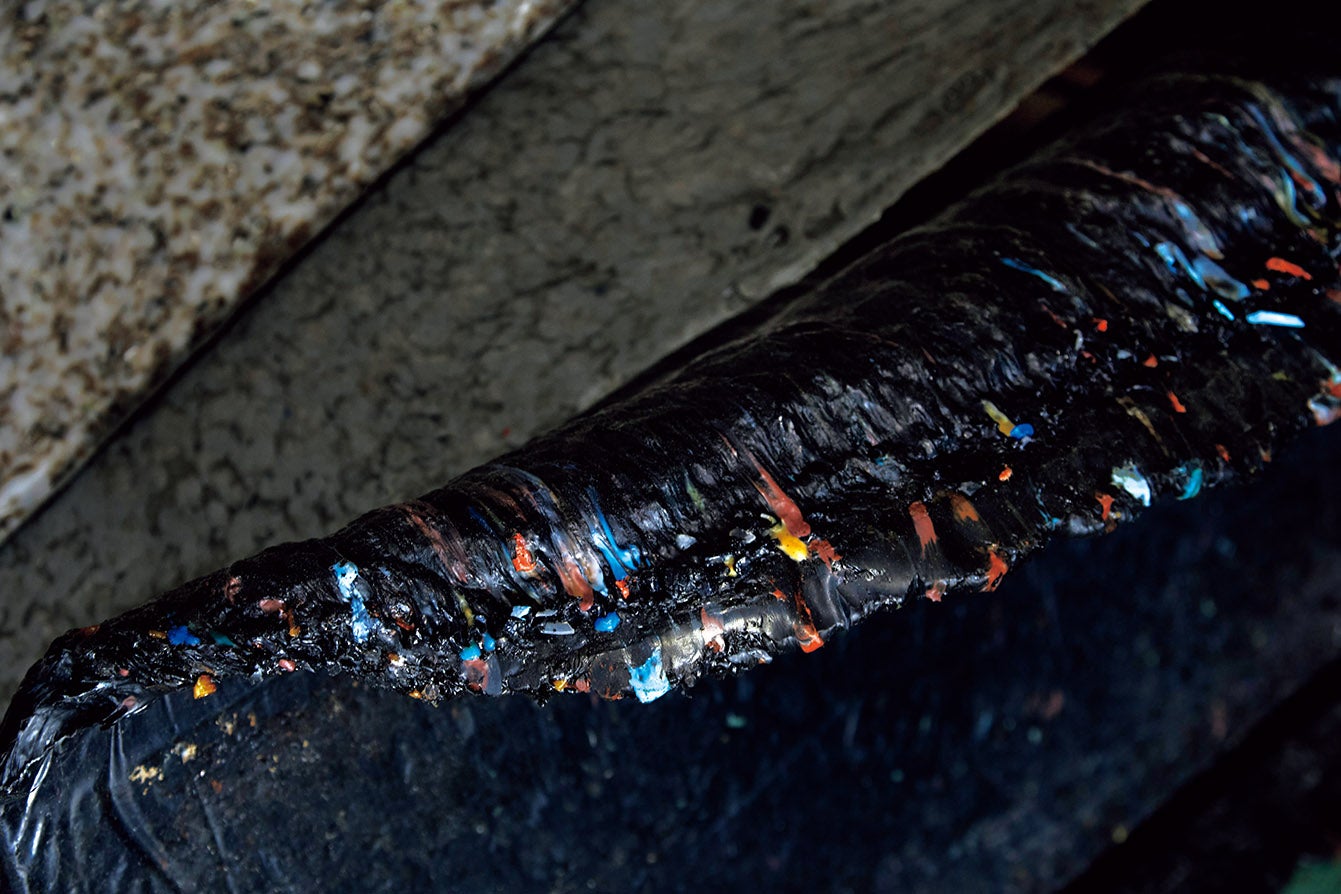
Thanks to Mase Goto, I started to see more and more uses for the materials, such as using them for fixtures, and my ideas started to expand. The boards are made by using the colors of crushed discarded plastic, and concept design are designed like painting art, and then molded using a heat press. By devising the materials, color schemes, and pressing methods, it is possible to create a variety of different products. By improving the press molding machine, it is now possible to handle larger sizes.
However, press molding machines are expensive if you buy them normally. A new one costs about 100 million yen, and even a used one costs 40 million yen. Since I couldn't afford it, I designed the heater part at a low cost and ordered it from a specialist, and built all the control parts myself. In the end, I made it for 1.5 million yen. The performance is comparable to a 100 million yen one. And because it was cheap, I was able to take on new challenges. Manufacturers that make industrial products have strict standards and conditions. Recycled materials are prone to contamination, so if a nail gets mixed in with the crushed material and scratches the press surface, the line will stop. But because we can repair our own equipment, we can take on new challenges. At one point, we made prototypes until late at night in the factory, and we were able to accumulate data on the temperature, heating time, and flake size for each resin. That data is now extremely useful for product development.
Goto: We sometimes consult with major material manufacturers to see if they can make things like this, but they require a large quantity. The amount we need to create one-of-a-kind spaces is not commensurate with what we need.
But when someone like Mase says, "Sure, let's give it a try," it's really encouraging. Because we can do it on a small scale, we can take a step forward. It fits with today's society, doesn't it?
Just the other day, I asked them to crush some artificial turf and make it into a board. Artificial turf is a composite material that contains rubber, so they usually don't accept it. But Mase-san said, "Let's crush it once. If it doesn't work, we can just clean it up, and if the machine breaks, we can just fix it." He was a very reliable person.
Mase: If you want to call it that, we're a "lab." Just like with artificial turf, each industry has its own discarded plastic. That becomes unique, and a pattern unique to that company is created. It's about recycling resources, but "interesting" comes first.
For example, ski boots are redesigned every three years, resulting in a large amount of waste. They are a composite material with aluminum fittings and fiber lining on the inside, but after removing the aluminum, they are crushed and pressed. By testing different ratios, we can find the recipe for a proper board material.
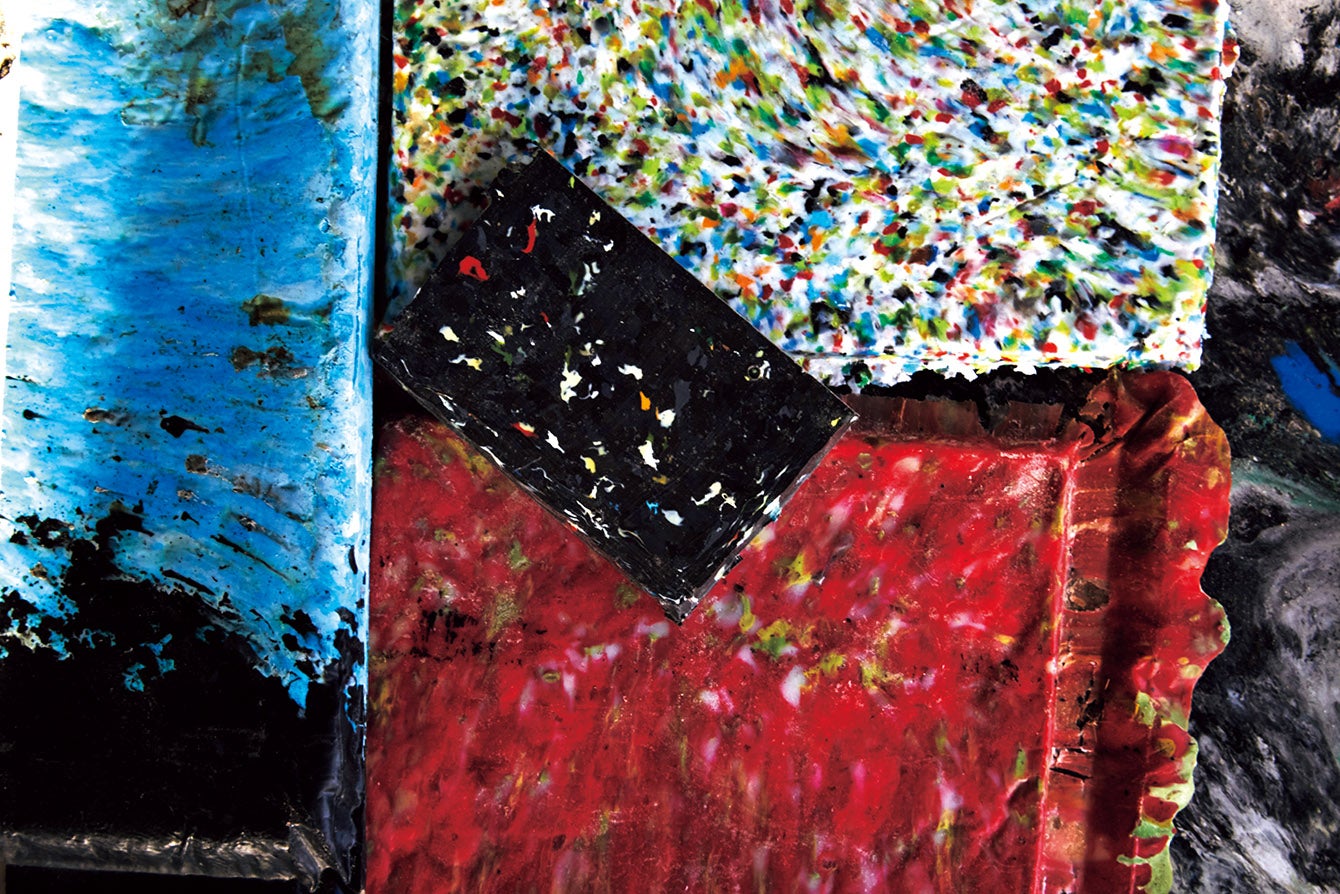
Goto:There is no industry that doesn't use plastic, and even for non-manufacturing industries, resin is always involved, for example, in the acrylic panels to prevent droplets from spreading during the COVID-19 pandemic, and in packaging materials. For customers, it is more convincing to hear that "your company's waste plastic has been recycled into this panel," than to be proposed environmentally friendly building materials whose origins are unclear.
Mase: This also has a big advantage for the waste disposal companies. Not only does it reduce the waste disposal costs that were previously incurred when throwing away plastic, but it also means that we can obtain the raw materials for almost free. This makes for a very profitable business model.
But our ultimate goal is to turn waste plastic into oil. We are currently working with a partner company to turn plastic back into petroleum. The technology has already been solved, so it's not difficult. The problem is profitability. We want to make it happen somehow using natural energy.
I think it's amazing that Goto Limare is able to balance social and business interests in various ways, for example by establishing a route to sell waste plastic in flake form and accepting composite plastic materials from the manufacturing industry.
In the context of our spatial production business, we would like to utilize these building materials together with a variety of planners and designers to create highly concept design works and generate communication that stems from the circulation of materials.
Wanting to breathe "future abundance" into the region
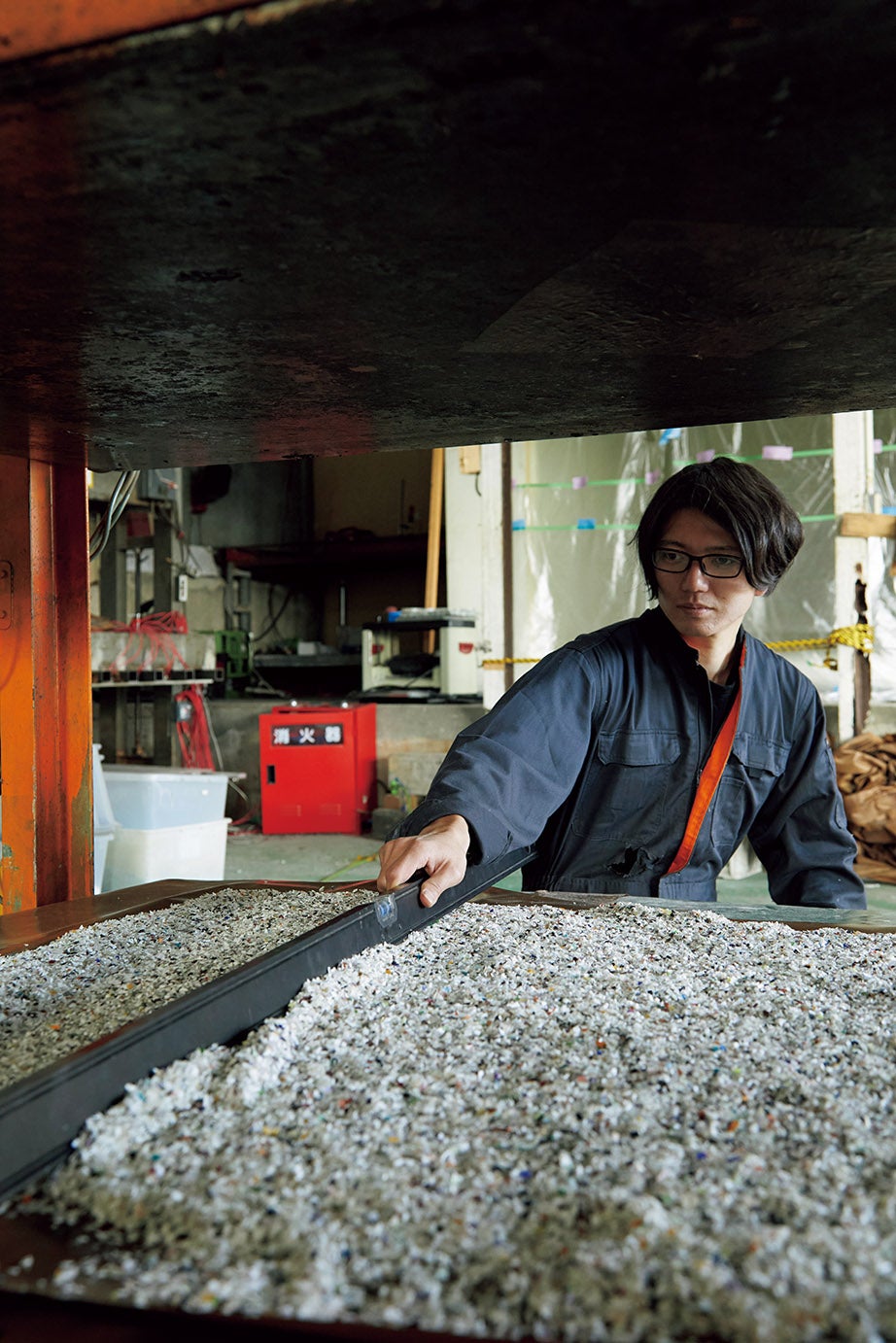
Mase: Ultimately, we want to recycle the general waste generated in Toba City and Shima City, turn it into products, and sell them to big cities like Tokyo. We want to concept design a system that will allow the flow of money from there to here. To do that, we need the cooperation of local people.
For example, people come from far away to participate in beach clean-up events. However, the participants have no idea what happens to the trash they collect. But if we recycle it into wooden boards and use them as tables in a local cafe, it will create an incentive to visit other than just drinking coffee. I would like to carry out a demonstration experiment based on the idea of "gourmet geopolitics."
Ishikawa Gourmet cannot be sustained if we only pursue the deliciousness of food. We consider ecosystems, environmental conservation, and climate change, and think about delicious food for each region. That is "gourmet geopolitics." We are also conducting research on this topic together with universities, but in the end, it's about changing the supply chain. Even around Ise-Shima, climate change is causing a big change in the species of fish that can be caught, and fish from the south that have never been seen before are being landed.
This includes waste plastic, but the point is that we all need to think together, including citizens, businesses, researchers, and government, about how to put unused resources into the supply chain and how to change consumer awareness and behavior. In that sense, I think Mase's artworks can also be a catalyst for behavioral change. The immediate goal is to reduce waste, but we can use this as a starting point to change the awareness of our citizens. It's time to create new wealth in each region.
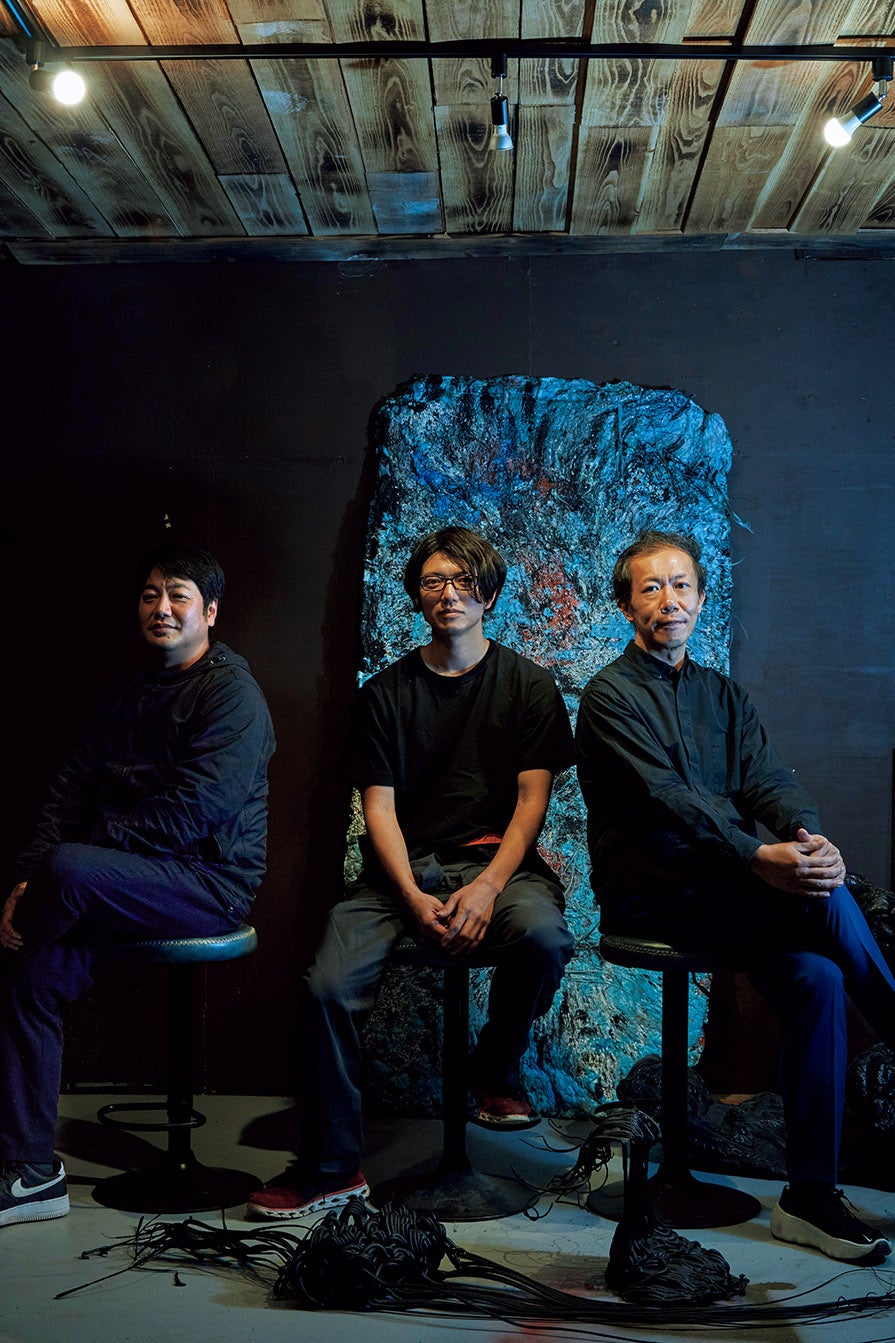
(Interviewed in December 2023. Titles in the article are those at the time of the interview.)
Photo = ©Kenta Yoshizawa
profile
REMARE
PresidentMasasuke Mase
Ise Shima Frozen
presidentTakamasa Ishikawa
NOMURA Co.,Ltd.
Business Production Headquarters, Future Creation Research Institute, Social Good Strategy Department, General ManagerYoshihisa Goto
NOMURA's Media
- NOMURA Co.,Ltd.SCENES
Please contact us using the button below if you have an inquiry, want to request a quote or request documents.
We have created a separate “FAQ page” that lists the most common questions we are asked.
Please take a look at this page if you have a question.
